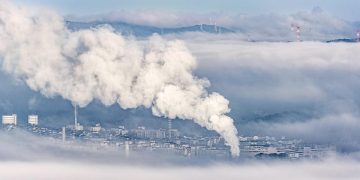Charting the Course: Examining the Evolving Landscape of Global Climate Policy
Climate change is one of the most pressing issues facing our planet today. As the Earth’s temperature continues to rise, the impacts of climate change are becoming increasingly severe, with more frequent and intense natural disasters, rising sea levels, and disruptions to ecosystems and agriculture. In response to these challenges, countries around the world have been working to develop and implement policies to mitigate and adapt to climate change.
The Paris Agreement: A Turning Point in Global Climate Policy
One of the most significant developments in global climate policy in recent years was the signing of the Paris Agreement in 2015. This landmark accord, which was adopted by 195 countries, set a target to limit global warming to well below 2 degrees Celsius above pre-industrial levels, with an aspiration to limit the increase to 1.5 degrees Celsius. The agreement also included commitments from countries to reduce their greenhouse gas emissions and to provide financial support to help developing countries adapt to the impacts of climate change.
Key Features of the Paris Agreement
The Paris Agreement represents a major shift in how countries approach climate change. Unlike previous agreements, which relied on a top-down approach with binding emissions targets for each country, the Paris Agreement is based on voluntary commitments known as Nationally Determined Contributions (NDCs). Each country sets its own targets and policies for reducing emissions, based on its individual circumstances and capabilities.
Challenges and Opportunities in Implementing the Paris Agreement
While the Paris Agreement represents a significant step forward in global climate policy, there are still many challenges to overcome in order to achieve its goals. One of the biggest challenges is the gap between the current level of ambition in countries’ NDCs and the emissions reductions needed to limit global warming to 1.5 degrees Celsius. In order to bridge this gap, countries will need to significantly increase their ambition and take more ambitious actions to reduce emissions.
Another challenge is the lack of financial support for developing countries to adapt to the impacts of climate change. While the Paris Agreement includes provisions for financial assistance from developed countries to developing countries, the level of funding provided has been insufficient to meet the needs of vulnerable countries. Closing this funding gap will be crucial for ensuring that developing countries can build resilience to the impacts of climate change.
Despite these challenges, there are also many opportunities for progress in implementing the Paris Agreement. One of the key opportunities is the growing momentum and public awareness around climate change, which has led to increased pressure on governments and businesses to take action. This has resulted in a number of positive developments, such as the rapid expansion of renewable energy and the adoption of ambitious climate policies in countries around the world.
The Role of Businesses and Non-State Actors in Climate Action
While national governments play a key role in shaping climate policy, businesses and non-state actors also have an important role to play in driving climate action. Many businesses are recognizing the risks and opportunities posed by climate change and are taking steps to reduce their emissions and transition to a low-carbon economy. Non-state actors, such as cities, regions, and civil society organizations, are also playing an increasingly important role in advocating for climate action and implementing innovative solutions.
Key Initiatives and Partnerships for Climate Action
There are a number of key initiatives and partnerships that have emerged to support climate action at the global, regional, and local levels. One example is the Science Based Targets initiative, which helps businesses set emissions reduction targets in line with the goals of the Paris Agreement. Another example is the Climate Group’s RE100 initiative, which brings together businesses committed to sourcing 100% of their electricity from renewable sources.
Barriers to Climate Action
Despite the progress that has been made in recent years, there are still many barriers to effective climate action. One of the biggest barriers is the influence of vested interests, such as the fossil fuel industry, which have lobbied against climate policies and invested in disinformation campaigns to sow doubt about the science of climate change. Another barrier is the lack of political will in some countries to take ambitious action on climate change, due to concerns about economic competitiveness or short-term political considerations.
Addressing these barriers will require a concerted effort from all sectors of society, including governments, businesses, and civil society. By working together and leveraging the resources and expertise of all stakeholders, we can overcome these challenges and chart a course towards a more sustainable and resilient future for our planet.
In conclusion, the evolving landscape of global climate policy presents both challenges and opportunities for addressing the impacts of climate change. By building on the momentum of the Paris Agreement and engaging all sectors of society in climate action, we can work towards a more sustainable and resilient future for our planet. Together, we can chart a course towards a safer and more prosperous world for future generations.
Keywords: global climate policy, Paris Agreement, climate action, renewable energy, emissions reduction, sustainable future





